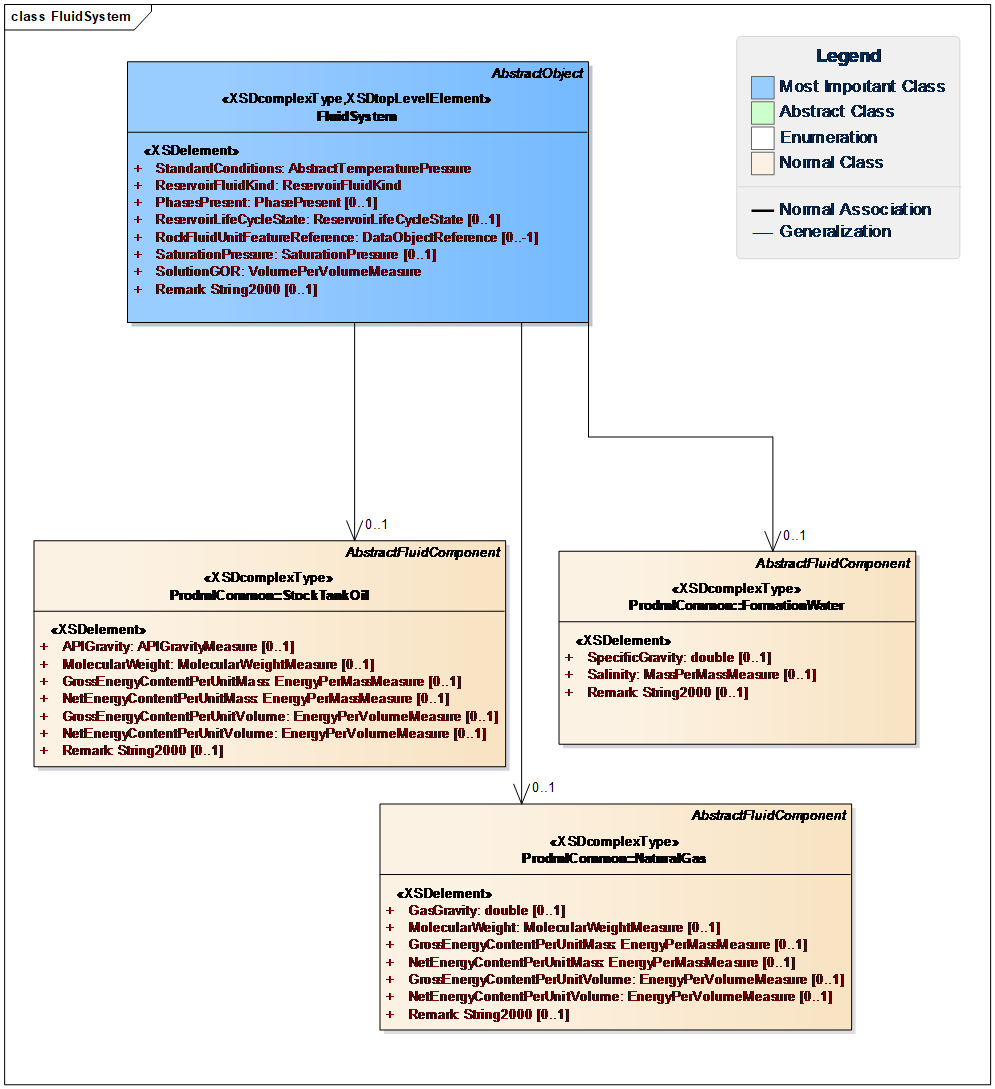10.1 Fluid System Object
| Topic Version | 1 | Published | 12/09/2016 | |
| For Standard | PRODML v2.0 | |||
The fluid system data object was created to designate each distinct subsurface accumulation of economically significant fluids. This data object primarily serves to identify the source of one or more fluid samples and provides a connection to the geologic environment that contains it. Characteristics of the fluid system include the type of system (e.g., black oil, dry gas, etc.), the fluid phases present, and its lifecycle status (e.g., undeveloped, producing, etc.).
Within the fluid system, the products that make up the fluid system can be described. Hydrocarbon components for crude oil and natural gas with the GOR, and formation water, can be defined. For more detailed analysis and characterization, any number of fluid components may be defined in other data objects.
The fluid system can also contain references to multiple rock fluid unit features, which are RESQML objects describing the concept of a combination of a fluid kind in a reservoir zone. Samples can subsequently be associated with a specific rock fluid unit feature from which they are taken.
The main elements of the fluid system object are shown in Figure 10.1-1 . The fluid system is referenced by several of the other objects, as shown in Figure 10-1 .
